LAB REPORT
Science and Technology Making Headlines
Dec. 1, 2017

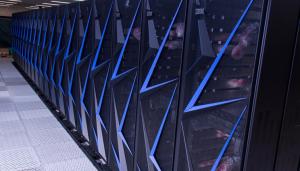
Lawrence Livermore National Laboratory is preparing Sierra, the Lab’s next advanced technology high-performance supercomputer, which will come online next year.
Introducing Sierra
Researchers from Lawrence Livermore National Laboratory are getting ready to launch Sierra, LLNL’s next-generation supercomputer.
Sierra will provide computational resources that are essential for nuclear weapon scientists to fulfill the National Nuclear Security Administration’s stockpile stewardship mission through simulation in lieu of underground testing.
The IBM-built advanced technology high-performance system is projected to provide four to six times the sustained performance and be at least seven times more powerful than LLNL’s current most advanced system, Sequoia, with a 125 petaFLOP/s peak. At approximately 11 megawatts, Sierra also will be about five times more energy efficient than Sequoia.
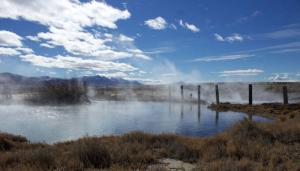
Steam rises from Great Boiling Spring, a nearly 200-degree natural pool where Lawrence Livermore scientists and colleagues have found the most ancient single-celled bacteria and archaea. Photo courtesy of UNLV.
Buried treasure trove yields first forms of life
Terrestrial geothermal systems are like buried treasure when it comes to finding out the origins of life on Earth.
In these underground hot springs, some of the most ancient single-celled bacteria and archaea live the life of extremophiles (organisms that live under extreme environmental conditions such as hot springs or icecaps). By their makeup alone, the microorganisms may reflect the nature of primitive environments, such as early Earth.
Lawrence Livermore National Laboratory scientists and colleagues from the University of Nevada, Las Vegas, California State University, San Bernardino and Stanford University are working on a NASA project to study microorganisms in a Nevada hot spring that could determine whether extraterrestrial life exists.

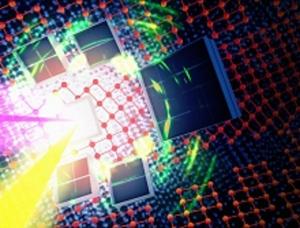
This image depicts an experimental setup at SLAC’s Linac Coherent Light Source, where a tantalum sample is shocked by a laser and probed by an X-ray beam. Image by Ryan Chen/LLNL.
It’s shocking
Scientists have used an X-ray laser to observe extreme shocks, as powerful as those found in the center of the Earth, as it propagated through a sample. This new way of observing shocks could help the study of meteor impacts, making better spacecraft shielding and improving performance ceramics used in armor.
Although, scientists have been creating powerful shocks with lasers for decades, this is the first time they’ve been able to probe a material as it is being shocked. The X-ray laser is pulsed and each pulse is super short, about one-tenth of a billionth of a second, and can be used to take a lot of snapshot images of the material being shocked.
The experiments were led by Lawrence Livermore’s Chris Wehrenberg. The team shocked a thin foil of the polycrystalline form of tantalum, a blue-gray metallic element, with a pulse from an optical laser. This powerful laser pulse vaporized a small part of the foil, which then turned into a plasma. A plasma can be thought of as a really hot gas, so hot that atoms no longer exist and the electrons are stripped away from their atoms. As a result, a "soup" of electrons and ions is left.

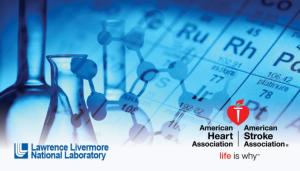
Supercomputing-based modeling may help validate and accelerate drug research.
Take it to heart
The American Heart Association (AHA) and Lawrence Livermore National Laboratory (LLNL) have formed a strategic business partnership to overcome the burden of drug discovery, cost and access.
The two organizations will leverage the world's most powerful supercomputers to accelerate drug discovery. LLNL scientists and engineers will create a simulated environment that rapidly and precisely predicts how drugs bind to their target proteins to generate a robust drug pipeline of new and targeted therapies.
This collaboration is part of the AHA's newly formed Center for Accelerated Drug Discovery, reinforcing the AHA's commitment to improve people's health by accelerating the pace at which drug-protein interactions are identified and documented before actual clinical trials begin.

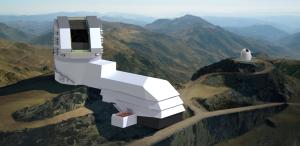
The Large Synoptic Survey Telescope is the largest digital camera in the world. Once operational, it will take panoramic images of every part of the sky.
Snapshots of the universe
Astronomers in California are building the largest digital camera in the world. It will go on a giant telescope taking shape in Chile called the Large Synoptic Survey Telescope (LSST).
LSST is different from most large telescopes. Instead of staring at a tiny patch of the sky and taking essentially one snapshot in time, LSST will take a panorama of every part of the sky -- and it will do so over and over and over. The idea is to see what’s moving or changing in the heavens.
Final assembly will take place at SLAC National Accelerator Laboratory and is still two years off. The sensors that will actually capture the light from stars are being assembled at Brookhaven National Laboratory. Lawrence Livermore National Laboratory is shepherding the construction of the optical lenses. A device for putting different color filters in front of the camera lens is coming from France.





